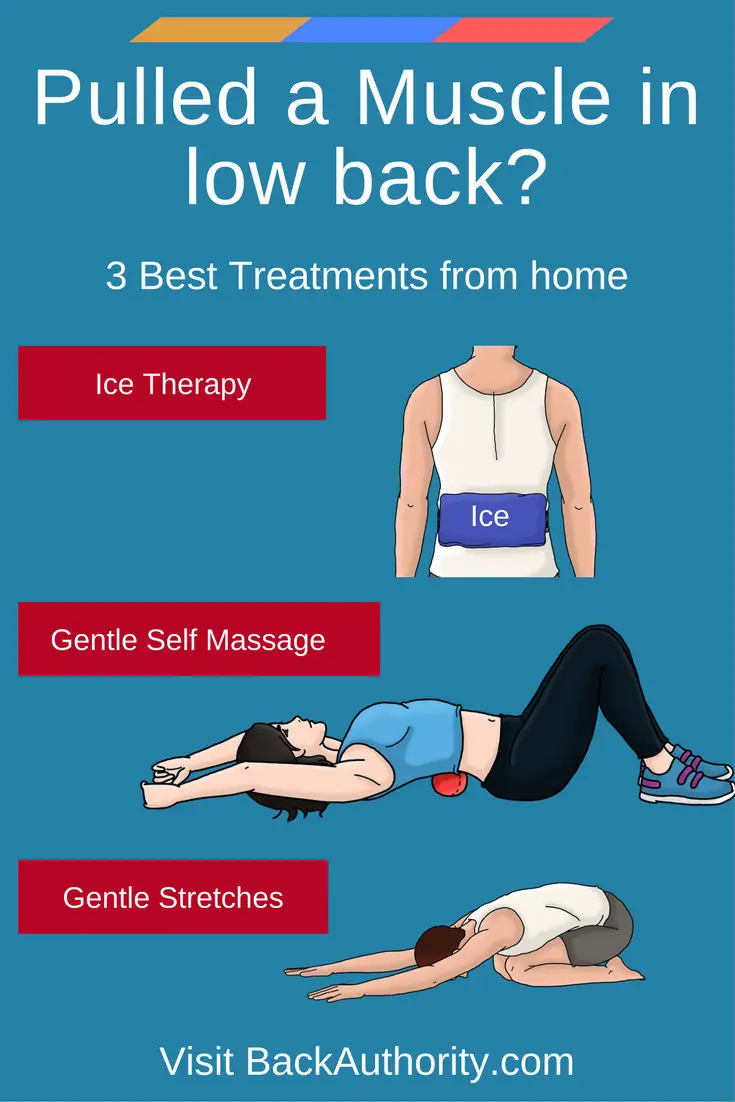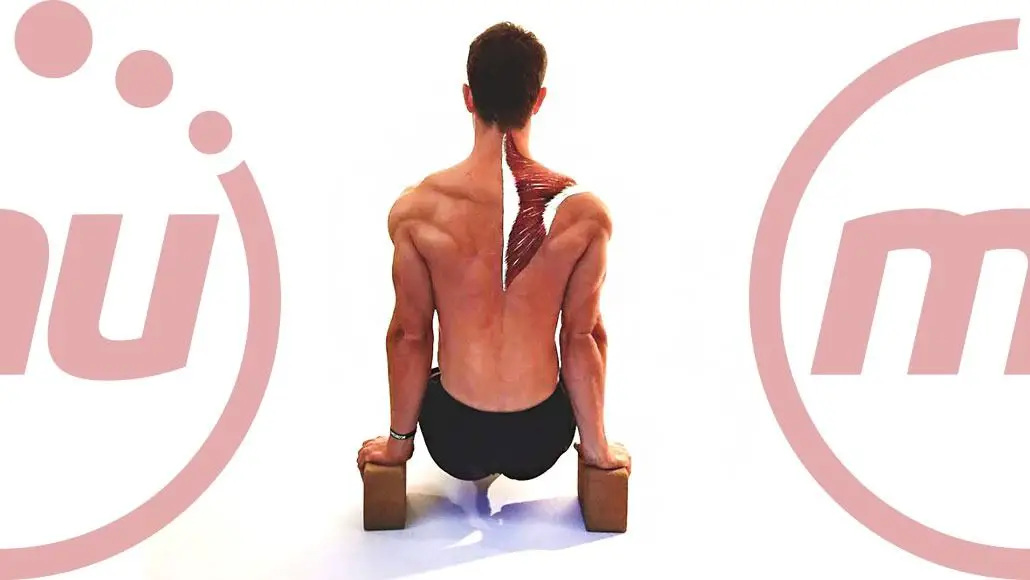Recovery Time For A Pulled Muscle In Back
Back muscle strain recovery time greatly depends on the extent of muscle tissue damage that you had. So, knowing how long a pulled muscle lasts can be difficult to specify.
However, Dr. Lawrence Gulotta from the Hospital for Special Surgery says that the length of time pulled or torn muscle takes to heal is as follows:3
- Mild back muscle strain should heal in 2-3 weeks if you apply hot and cold treatment to the muscle injury.
- A severe back strain or pulled muscle that shows signs of swelling may take between 2 and 3 months to heal completely and be free of pain.
- A complete back muscle tear may need surgery to reattach the muscles and tendons.
Causes Of Pulled Torn Or Strained Muscle In Back
Unfortunately, all of us at some point in our lives will suffer from some degree of upper back pain, middle back pain, or lower back pain. In fact, according to a report published in 2014, lower back pain is the number one cause of lost days at work. The report described back pain as a major health condition that affects about 10% of people and is a leading cause of disability worldwide.4
First A Few Quick Tips
Stretch your lower back with safety and care. Be especially gentle and cautious if you have any type of injury or health concern. Its best to talk with your doctor first before starting any new types of exercise.
You can do these stretches once or twice a day. But if the pain seems to get worse, or youre feeling very sore, take a day off from stretching.
Be mindful of your bodys limits and dont push your body to do too much. Listen to your body and do what feels best for you in each moment.
As you go through these stretches, take your time and pay close attention to your breathing. Use your breath as a guide to make sure you dont strain or overdo it. You should be able to breathe comfortably and smoothly throughout each pose or stretch.
Don’t Miss: How Much Advil Can I Take For Back Pain
Pulled Muscles Can Be Classified As Either:
Strains â A tendon or a muscle that is stretched or torn.
- Strains are typically caused by an overload and stretching of the muscle and tendon that results in a partial or complete tear.
Sprains â A ligament that is torn or stretched.
- Ligaments connect bone to bone at a joint, so this is considered a more serious injury and takes longer to recover from.
No matter which one you have, the treatment is the same for both.
Recovering From A Muscle Strain At Home

Don’t Miss: Will Aleve Help Back Pain
What Can I Do To Help The Pulled Muscle In My Low Back
A pulled muscle, no matter where it occurs, is just another name for a muscle strain. A muscle pull or strain occurs when all or an isolated portion of a muscle is stretched beyond its normal limits. This results in some degree of muscle tear, from a few micro-tears of muscle fibers to a massive ripping of an entire muscle . Regardless of the location of the muscle strain, treatment does not differ much a pulled back muscle should receive treatment that is fundamentally the same for a muscle tear in the leg or neck.
Pulled Muscle In Lower Back Exercises
There are several exercises you can perform to help your lower back heal. Not only will they help the muscle spasms you may be having, they make your back stronger so its not as likely to become injured again.
Here are a few easy stretching exercises. Take them slowly and move gradually into each position. If any of these make your back pain worse, stop and see a doctor.
Don’t Miss: Does Aleve Work For Back Pain
When Should I Contact My Healthcare Provider About A Back Strain Or Sprain
- You have severe pain and cannot walk more than a few steps.
- You have numbness in the area of injury or down your leg.
- You have injured your lower back several times before.
- You have a lump or area with an unusual shape.
- You have pain that interferes with sleep.
- You have obvious weakness in an extremity after an injury.
Last reviewed by a Cleveland Clinic medical professional on 11/09/2018.
References
Causes And Diagnosis Of A Pulled Back Muscle
Trauma, stress, and tension may all cause strains and sprains. Some of the most common causes include:
- Falling, especially if you hit the ground hard or fall in an awkward position.
- Repetitive movements that stress and irritate the back muscles.
- Unsafe lifting, lifting while twisting, or lifting a very heavy object. Parents sometimes injure their backs throwing or playing with children.
- Excess weight that puts excess strain on back muscles. People who are overweight, people who suddenly gain weight, and pregnant women are more vulnerable to pulled muscles.
- A sedentary lifestyle. This may weaken the back, increasing the risk of injuries.
- Poor posture when sitting or bad form when doing athletic activities.
A medical professional may suspect a strain or sprain based on symptoms and your medical history. If another injury, such as a broken bone or herniated disc, is possible, the provider may do other tests, such as an x-ray or MRI scan.3
Also Check: Ibuprofen For Back Pain Dosage
How To Treat A Pulled Back Muscle In 8 Steps
A pulled back muscle can begin as a sudden, sharp pain when lifting or bending. Or it may appear gradually, getting progressively worse over several days. This common injury ranges from a minor inconvenience to an intense source of pain. It can take several weeks, and in some cases a few months, to heal.1
A pulled muscle is the common term for a strained muscle.2 A strain is a muscle or tendon injury that happens when the tissue stretches or tears. When a ligament stretches or tears, its called a sprain. Back pain, often due to a pulled muscle, is one of the most common issues health professionals treat.2 In most cases, you can manage and treat symptoms at home. But if the pain is unbearable or makes it difficult to move, see a doctor.
Testing Your Psoas Muscle
An easy way to test if this might be your issue is to lay on your back on a flat surface and bring your heels close to your body and your knees up.
This puts the psoas in a resting position. If it relieves your back pain, the psoas muscle is almost certainly the root of your pain.
What you want to do is relax and lengthen the psoas muscle so that it takes pressure off of your lumbar spine.
Also Check: Advil For Back Pain Dosage
Also Check: Is Aleve Good For Back Pain
When & How To Seek Medical Care
If low back pain lasts for longer than one to two weeks, seek medical care. First, make an appointment with your primary care physician.
Seek immediate medical attention if any of the following symptoms are present in addition to back pain:
- Severe abdominal pain
- Unexplained fever
- Loss of control of your bowels or bladder
How Long Does It Take For A Pulled Back Muscle To Heal

Lower back pain is caused mainly an injury to soft tissues in the lower part of the spine, which affects the muscles, ligaments and tendons.
When you suffer from a pulled muscle in the lower back, it takes between four to six weeks to heal in mild cases. This is the standard pulled back muscle recovery time according to doctors.
However, when it comes to severe cases where there is extensive muscle tear, this can take several months to heal.
Read Also: How Does A Diuretic Help Back Pain
Treatment For Pulled Back Muscles
Most pulled muscles are fairly straightforward to diagnose and can be treated with ice or heat and over-the-counter pain medication. While your injury heals, its best to avoid strenuous activity or heavy lifting.
- an ice pack wrapped in a towel applied for 10 to 20 minutes several times a day to reduce inflammation and ease pain when the injury first occurs.
- heat packs applied several times a day after the first 48 hours to increase circulation and speed healing.
- over-the-counter or prescription pain medicationssuch as ibuprofen, aspirin, or naproxento reduce inflammation.
- muscle relaxants, which require a prescription, to help ease painful muscle spasms.
- physical therapy to strengthen muscles and provide better support for the spine and reduce the chance of future injury.
- gentle stretching exercises to increase blood flow to the injury and strengthen the back and abdominal muscles that support the spine.
- massage to reduce muscle tension and pain, increase circulation, and improve range-of-motion.
- a 5- to 10-minute walk a couple of times a day to relieve back stiffness and promote physical activity to avoid future problems.
In most all cases, pain from a pulled back muscle gets better after only a few days. But if it lasts for more than a week or two or the pain is severe, its time to call your doctor. If you experience a loss of feeling in your legs or groin, fever, loss of control of your bowels or bladder, or severe abdominal pain, get medical help.
Not Sure What To Do Next
If you are still concerned about your back injury, check your symptoms with healthdirects online Symptom Checker to get advice on when to seek medical attention.
The Symptom Checker guides you to the next appropriate healthcare steps, whether its self care, talking to a health professional, going to a hospital or calling triple zero .
Donât Miss: Advil Or Tylenol For Back Pain
Read Also: Advil For Back Pain Dosage
Low Back Muscle Strains
The spine is supported by large muscles called the paraspinal muscles. These muscles both support the spinal column as well as the weight of the upper body. The five lumbar vertebrae are connected by tough ligaments that help to maintain the position of the spinal column.
These muscles, ligaments, and bones all work together to provide control and strength for nearly all activities. The lumbar spine and its muscles are needed for most all movements and activities. For this reason, the lumbar spine is prone to injury, and when an injury has been sustained, people have difficulty performing many activities.
Exercise #: Cat & Cow
The cat and cow is a great spine mobility exercise that you can do to help energize your low back muscles.
How to do it:
- Begin by kneeling on all fours with your hands positioned under your shoulders and your knees positioned directly below your hips.
- Exhale and arch your spine gently.
- Inhale and tighten your core muscle while you round your back.
- Aim for 10 repetitions.
Read Also: Does Motrin Help With Back Pain
Whats The Treatment For Low Back Strain
Low back strain can be a painful and depressing injury. But the good news is that most cases heal on their own, given time. To speed the healing, you should:
- Ice your back to reduce pain and swelling as soon as you injure yourself. Do it for 20-30 minutes every 3-4 hours for 2-3 days. You can also ice your back after physical activity.
- Apply heat to your back but only after 2-3 days of icing it first. Use heat on your back only after the initial swelling has gone down. You could use an electric heating pad or a hot water bottle. Or you could just soak in a hot bath.
- Take painkillers or other drugs, if recommended by your doctor. Non-steroidal anti-inflammatory drugs , like Advil, Aleve, or Motrin, will help with lower back pain and swelling. However, these drugs may have side effects. They should be used only occasionally, unless your doctor specifically says otherwise. Prescription painkillers and muscle relaxants are sometimes necessary.
- Use support. Ask your doctor or therapist first, but consider getting a belt or girdle to add support to your back. Use it only short-term or for support with heavy or repetitive lifting.
- Get physical therapy to build up strength, if your doctor recommends it. Do not stay in bed or on the couch all day. That will make it worse.
- Maintain good muscle tone in your abdominal and lower back muscles.
Lower Back Muscle Pain Causes And Treatment
Pain in the lower back is quite a common occurrence nowadays. In a lot of cases, this may be caused by spinal disorders such as a pinched nerve , spinal stenosis , herniated disks, sciatica, piriformis syndrome, and others. The effects caused by spinal disorders may often lead to chronic back pain, and last for a long time, especially if left untreated.
On the other hand, pain in this region of the back may also often occur due to issues related to back muscles. This type of pain tends to be more temporary in nature and may go away with adequate rest.
Also Check: Advil Good For Back Pain
Try Doing Gentle Back Stretches
Lower Back Stretches To Reduce Pain And Build Strength

Lower back pain is a fairly common health concern, as so many things can cause it.
In some cases, it might be a symptom of an underlying condition, like kidney stones or acute pancreatitis. Other times, its simply a side effect of a sedentary lifestyle or repetitive motions.
While stretching isnt a remedy for all lower back pain, in many instances, it can provide relief. If youve been living with some mild discomfort or stiffness, these seven stretches may help reduce the pain and strengthen the muscles in your lower back.
Also Check: Advil Or Aleve For Back Pain
When Will My Lower Back Strain Feel Better
Recovery time depends on how serious your low back strain is. Mild cases may resolve in a couple of days. It can take many weeks for more serious strains. Remember that everyone heals at a different rate.
Once the back pain is gone, your doctor will probably want you to start a regular exercise routine. This will get your back muscles stronger and more limber. It will help you recover, and reduce your odds of low back strain in the future. Your doctor will probably want you to take up low impact sports, like swimming or using a stationary bike.
Whatever you do, don’t rush things. Don’t try to return to your previous level of physical activity until:
- You can move as easily — without stiffness — as you did before your injury.
- You feel no pain when you bend, twist, walk, run, and jump.
If you start pushing yourself before your low back strain is healed, you could end up with chronic back pain and permanent injury.
How To Recover From A Strained Or Pulled Muscle
This article was medically reviewed by Troy A. Miles, MD. Dr. Miles is an Orthopedic Surgeon specializing in Adult Joint Reconstruction in California. He received his MD from the Albert Einstein College of Medicine in 2010, followed by a residency at the Oregon Health & Science University and fellowship at the University of California, Davis. He is a Diplomat of the American Board of Orthopaedic Surgery and is a member of the American Association of Hip and Knee Surgeons, American Orthopaedic Association, American Association of Orthopaedic Surgery, and the North Pacific Orthopaedic Society.There are 11 references cited in this article, which can be found at the bottom of the page.wikiHow marks an article as reader-approved once it receives enough positive feedback. In this case, 92% of readers who voted found the article helpful, earning it our reader-approved status. This article has been viewed 1,116,079 times.
Muscle strains, also called pulls, occur when the small fibers within a muscle are stretched beyond their limits, which results in a partial or complete tear . All muscle pulls are categorized as either Grade I , Grade II or Grade III .XResearch source Most mild-to-moderate muscle strains heal within a few weeks, although your recovery may be quicker and more complete if you follow some tried-and-true home remedies or seek professional treatment.
Don’t Miss: Aleve And Back Pain